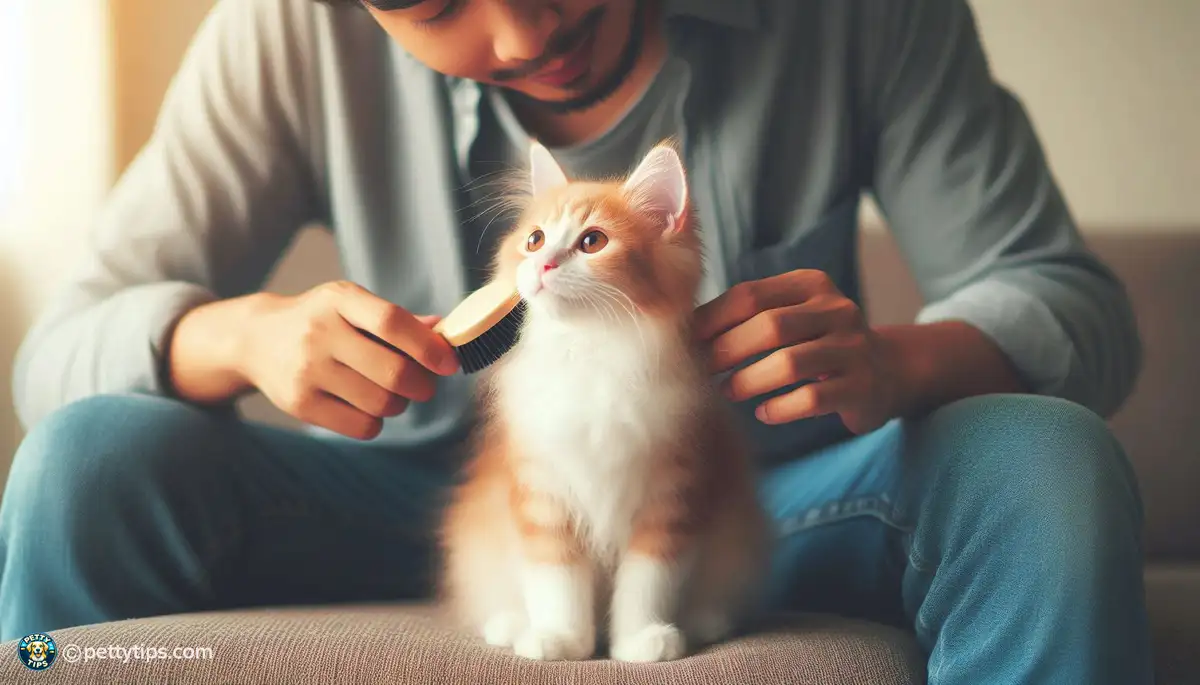
Implementing Environmental Enrichment for Litter Box Issues
Aurora Luckett - Sep 21, 2024 - 5 min read


Grooming is not just about vanity for our feline friends; it's a crucial aspect of their health and well-being. Cats are meticulous groomers by nature, spending a significant portion of their waking hours licking themselves clean. This grooming ritual helps remove dirt, debris, and loose fur from their coats, but it also serves other essential purposes. Grooming helps distribute natural oils throughout their fur, keeping it healthy and shiny. Moreover, it stimulates blood circulation and provides a comforting sensation for cats, akin to a soothing massage.
Grooming also plays a vital role in a cat's psychological state. It's a self-soothing behavior that helps alleviate stress and anxiety. For newly adopted cats, grooming can be particularly comforting as they adjust to their new environment. It provides them with a sense of familiarity and security, helping them feel more at ease in their new home.
When you take the time to groom your cat, you're not just helping them maintain their physical appearance; you're also building trust and strengthening your bond with them. Regular grooming sessions allow you to establish a routine and create positive associations with touch. For newly adopted cats, who may be wary of human interaction initially, grooming can be a gentle way to earn their trust and show them that you're a source of comfort and care.
When it comes to teaching grooming etiquette to a newly adopted cat, patience is key. Start by introducing grooming in short, gentle sessions to avoid overwhelming your cat. Use a soft brush or grooming glove to gently stroke their fur, paying attention to their body language for signs of discomfort or stress. If your cat seems hesitant or anxious, take a step back and try again later.
Make grooming a positive experience for your cat by offering treats and praise during and after each session. This positive reinforcement will help your cat associate grooming with something enjoyable and rewarding. Keep the sessions brief initially, gradually increasing the duration as your cat becomes more comfortable with the process.
It's essential to respect your cat's boundaries during grooming sessions. If they show signs of discomfort or agitation, such as hissing, growling, or trying to escape, stop immediately and give them space. Pushing your cat beyond their comfort zone can erode trust and make future grooming sessions more challenging.
When selecting grooming tools for your cat, consider their coat type and preferences. Long-haired cats may require a slicker brush or comb to prevent matting and tangles, while short-haired cats may benefit from a soft-bristled brush or grooming mitt. Experiment with different brushes and techniques to find what works best for your cat.
In addition to brushing, nail care is an essential aspect of grooming for cats. Invest in a pair of high-quality cat nail clippers and learn how to trim your cat's nails safely and effectively. Start by gently handling your cat's paws during grooming sessions to get them accustomed to the sensation before attempting to trim their nails.
While most cats are adept at keeping themselves clean, occasional baths may be necessary, especially for outdoor cats or those with certain medical conditions. When bathing your cat, use a mild, cat-friendly shampoo and lukewarm water. Be sure to thoroughly rinse all traces of shampoo from their fur to prevent skin irritation.
For long-haired cats, matting and tangles can be a common grooming challenge. regular brushing helps prevent matting by removing loose fur and detangling knots before they become problematic. If you encounter stubborn mats, use a detangling spray or seek professional grooming assistance to avoid causing discomfort to your cat.
Some cats may resist grooming due to past negative experiences or simply because they haven't been properly introduced to it. If your cat is reluctant to participate in grooming sessions, try using a gentle approach and gradually build up their tolerance over time. Offering treats and praise can also help make grooming more appealing to reluctant cats.
If you notice any changes in your cat's skin or coat during grooming, such as redness, irritation, or excessive shedding, it's essential to address these issues promptly. Consult with your veterinarian to rule out any underlying medical conditions and develop a grooming regimen tailored to your cat's specific needs.
Grooming is an essential aspect of cat care that goes beyond mere aesthetics. It's a means of maintaining your cat's health, happiness, and overall well-being. By teaching grooming etiquette to your newly adopted cat, you're not only helping them look their best but also strengthening the bond between you. Approach grooming with patience, empathy, and respect for your cat's individual preferences, and you'll lay the foundation for a lifelong partnership built on trust and mutual care.